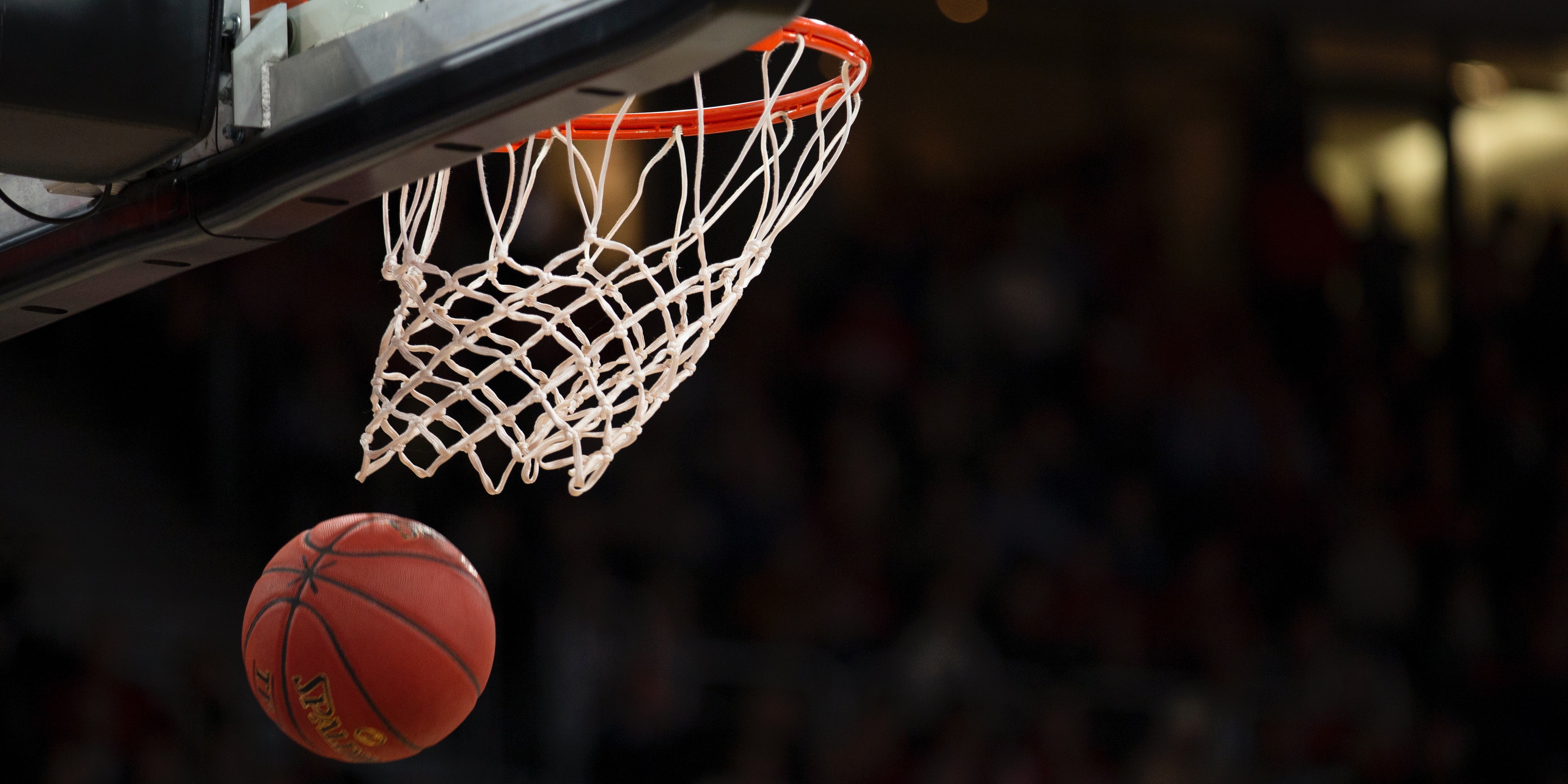March Madness and the NBA playoffs are right around the corner. Basketball players of all ages will watch some of the best teams compete for the title. To be the best, athletes need to train like the best.
The sport of basketball requires a significant amount of skill, agility, and speed in linear, lateral, and rotational movements. Performance programs that solely focus on muscle hypertrophy or muscular strength will inadequately prepare an athlete for the demands on the court. Therefore, it is essential to develop sports performance programs, which optimize an athlete's skill, agility, and speed, while also limiting the risk of injury.
The OPT™ Model and Basketball
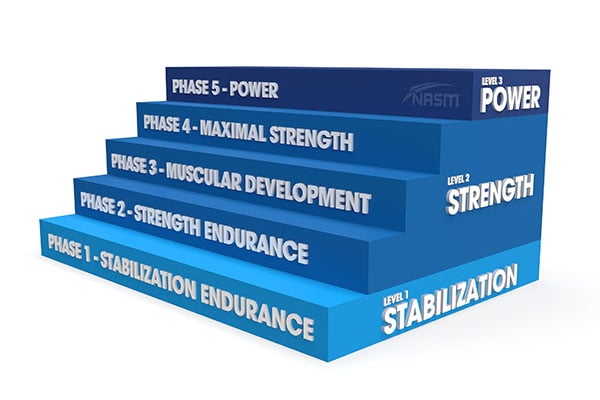
The OPT™ model is the perfect guide for developing basketball-specific programs. As mentioned, basketball requires linear, lateral, and rotational movements. A player must be able to generate speed and power while moving efficiently and maintaining stability. Therefore, personal trainers should develop programs with a focus on stabilization, strength, and power in a multi-planar environment.
Stabilization Phase
The goals of the stabilization phase of the OPT™ model are to improve muscle imbalances, improve stabilization of the core musculature, prevent tissue overload, improve the overall cardiorespiratory and neuromuscular condition, and establish proper movement (Clark, Sutton, & Lucett, 2014). For basketball, this phase will help increase stability control by emphasizing low-to-no weight, low sets, and high repetitions.
Stability programs should contain flexibility, core, balance, plyometrics, SAQ, and resistance training and be implemented 2-4 times per week for 4-6 weeks (Clark, Sutton, & Lucett, 2014). The following is an example of a program specific to basketball. The exercises can be adjusted, but it is important to note that the main focus is control and stability, so training should place the athlete in a position to which they need to maintain stabilization while performing the exercises in a slow and controlled manner.
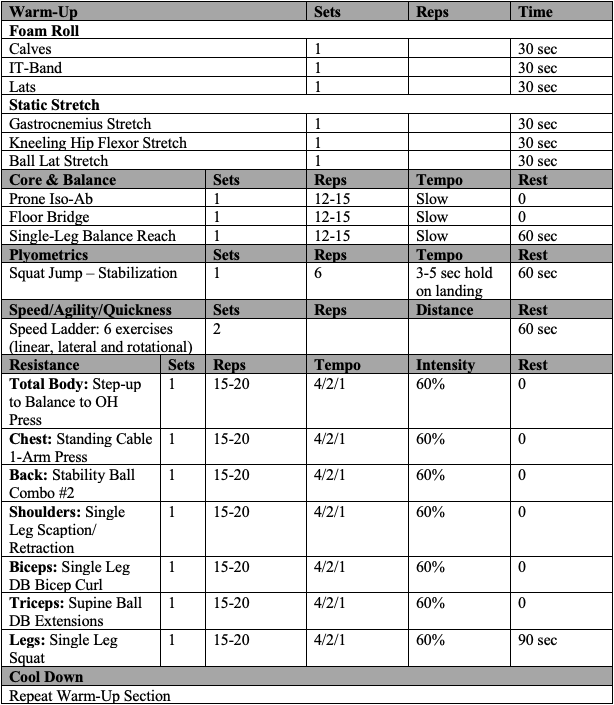
Strength Phase
The strength section of the OPT™ model consists of three phases: Strength Endurance Training (P2), Muscular Development Training (P3), and Maximum Strength Training (P4). In each of these phases, the main focus is to increase stability while increasing strength. Fitness professionals will need to decide which phase is most appropriate for the needs of their client as they develop their annual and monthly training plans. Each phase should be utilized for a period of 4 weeks.
Once an athlete has completed one phase in this section, it is recommended they cycle back through a 4-week Stability Endurance Training program (Phase 1) (Clark, Sutton, & Lucett, 2014). The table below provides key components of each of the three phases.
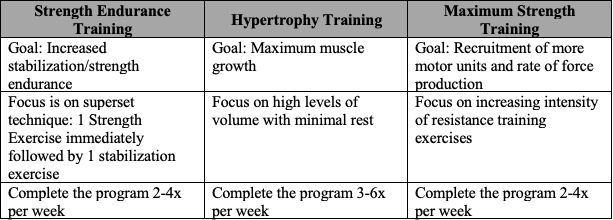
Sample Strength Programs for Basketball Athletes
Strength Endurance Training (P2)
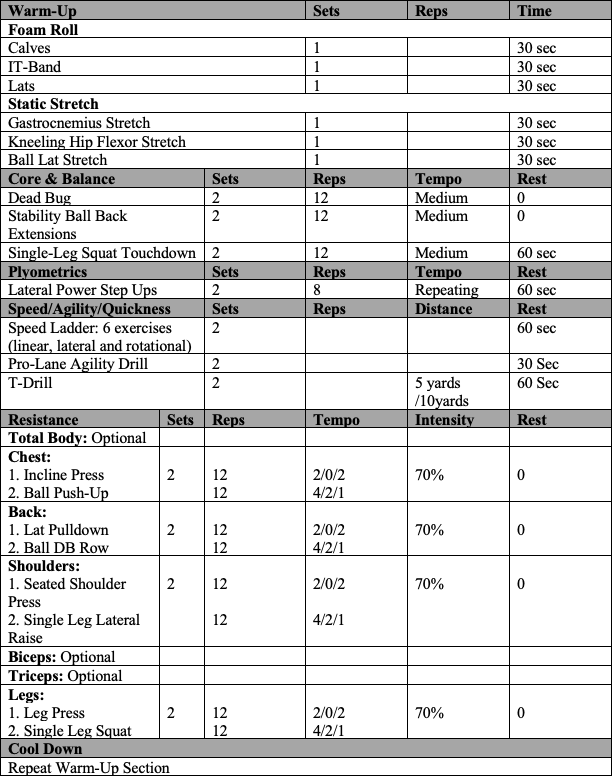
Muscular Development Training (Chest, Shoulders, Triceps) (P3)
**Note: this phase can be divided into body segments**
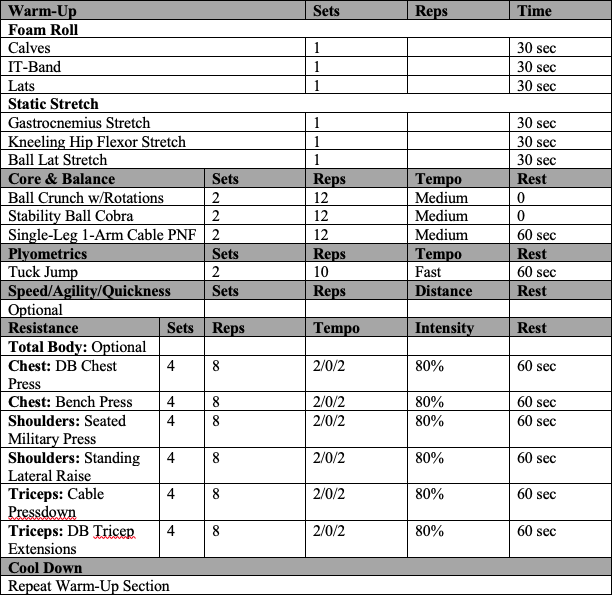
Maximum Strength Training (P4)
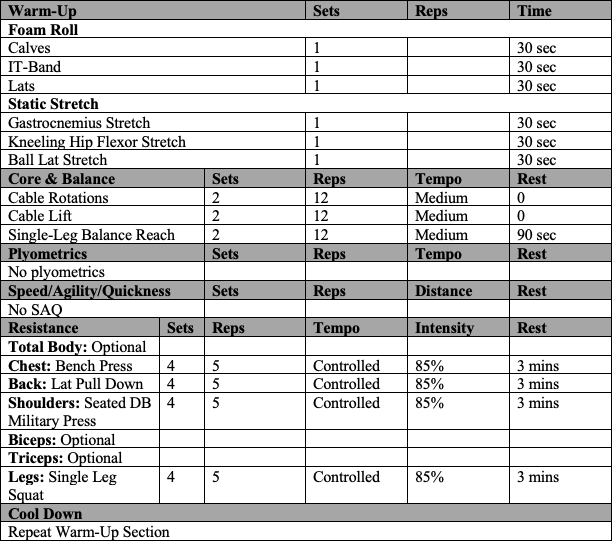
Power Phase
The final section of the OPT™ model is power. This section is divided into two phases: power training (P5) and maximal power training (P6). In these phases, basketball athletes will develop the power and high force production necessary to compete on the court.
This section of the OPT™ method is essential for increasing vertical jump and explosiveness (Clark, Sutton, & Lucett, 2014). These phases should each be completed for 4-weeks, and proper rest should be given between each exercise.
Power Training (P5)
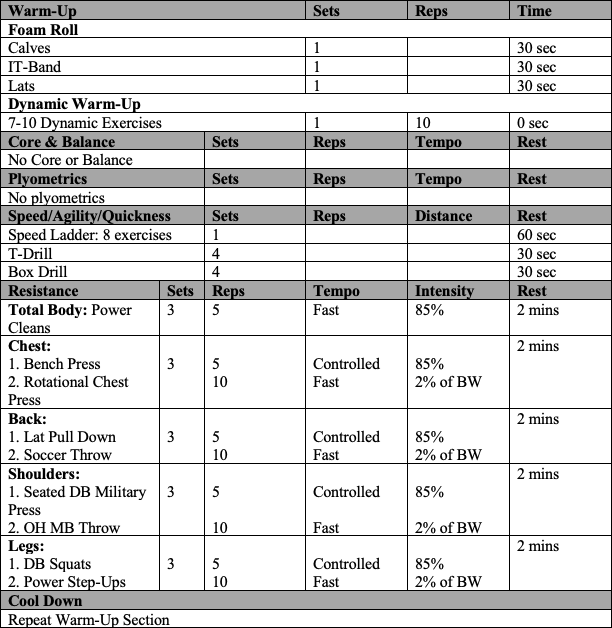
Maximal Power Training (P5)
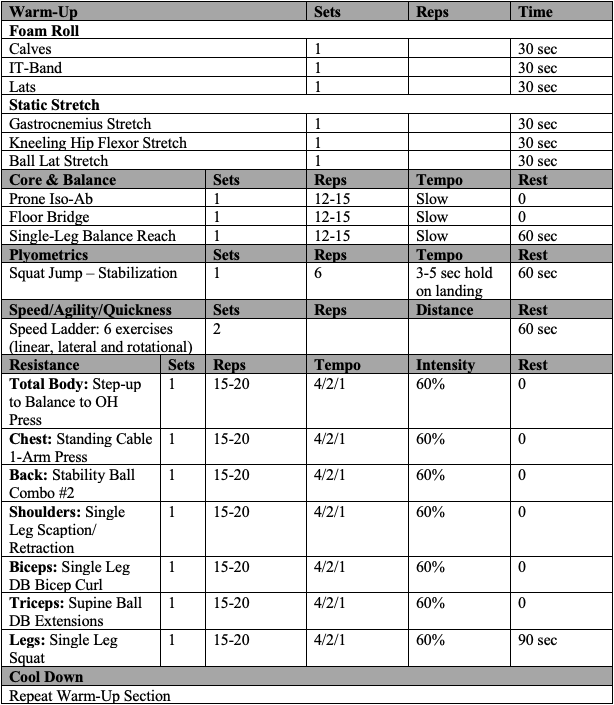
Other Variables
A proper program is an essential step in optimizing performance, but it is not the only step. Athletes should ensure they are following sound nutrition, sleep, mental health, training load, rest and recovery, and other essential recommendations to take their game to the next level.
Conclusion
Basketball is a highly skilled and agile sport. The demands and forces imposed upon an athlete are not just linear but come from a multitude of directions. The programs outlined in this blog will help a basketball athlete of any age and level prepare like the best.
See also: Corrective Strategies for Basketball
References
Clark, M., Sutton, B. G., & Lucett, S. (2014). NASM essentials of sports performance training. First edition revised. Burlington, MA: Jones & Bartlett Learning.

